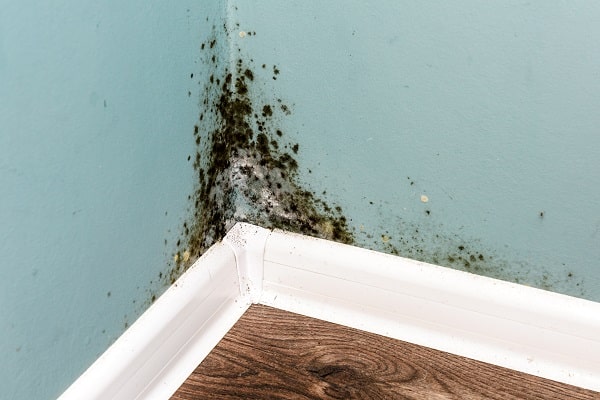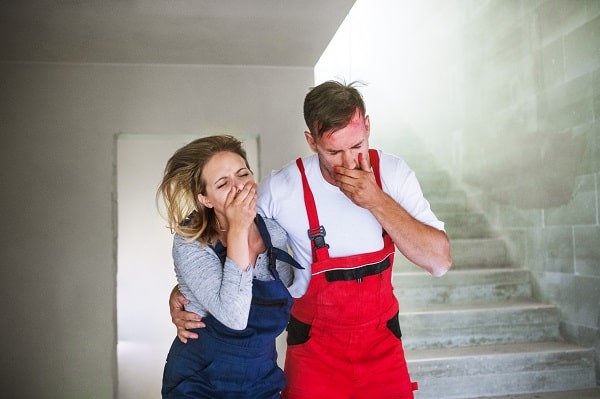Are you feeling under the weather? It’s possible your old home is to blame. Many people don’t realize that their home could make them sick, but it’s a real possibility. In this article, we will discuss some ways in which your old home could make you sick. We will also provide tips for fixing the problem and making your home healthier for you and your family!
Contents
Your Old Home and Sick Building Syndrome
If you’ve ever felt nauseous or dizzy in a building, you may have experienced sick building syndrome (SBS). SBS is a condition that can occur when people are exposed to toxins or other harmful substances in the indoor environment. These substances can come from many sources, including cleaning products, paints, adhesives, and office equipment. In some cases, they may also be released into the air by mold or other allergens. Symptoms of SBS can vary depending on the individual, including headaches, fatigue, difficulty concentrating, and respiratory problems. While SBS is not typically a severe health concern, it can be very disruptive and uncomfortable. If you suspect that you may suffer from SBS, you must speak to your doctor or another healthcare professional to get a proper diagnosis and treatment plan.
Lead Paint

If you live in an older home, there’s a good chance it contains lead paint. While lead paint was once a common construction material, it has since been banned due to its health risks. When lead paint begins to deteriorate, it can release lead dust into the air. This dust can then be inhaled or ingested, leading to lead poisoning. Symptoms of lead poisoning include headaches, abdominal pain, constipation, and joint and muscle pain. It can cause seizures, coma, and even death in severe cases. If you suspect that your home may contain lead paint, it’s essential to have it tested by a professional. If the test returns positive, there are several ways to remove the lead paint from your home safely. Taking these steps will help protect your health and ensure your home is safe for everyone who lives there.
Mold

Many of us are guilty of holding on to sentimental items from our childhood or previous residences. However, these items could be doing more harm than good. It’s essential to be aware of how your old home could make you sick, and one of the most common culprits is mold. Mold thrives in damp, dark environments and can release harmful spores into the air. These spores can cause various respiratory problems, such as coughing, congestion, and difficulty breathing. In some cases, mold exposure can also trigger an asthma attack. If you suspect mold is present in your home, it’s essential to have the problem professionally remediated. In the meantime, keep the affected area well-ventilated and avoid spending prolonged periods in that part of the house. Taking these precautions can help minimize your exposure to mold and improve your overall health.
Pests

Most people are familiar with the idea that pests like rats and cockroaches can carry diseases, but few realize that even seemingly harmless pests can threaten human health. For example, dust mites are tiny creatures that thrive in warm, humid environments. They are often in bedding and upholstered furniture and feed on dead skin cells. While they are not known to transmit diseases, they can cause asthma and other respiratory problems. Similarly, termites may not carry diseases, but they can cause severe damage to homes by eating wood. In addition, their droppings can trigger asthma and allergies. As these examples illustrate, even common household pests can significantly impact human health. Therefore, it is vital to be aware of the risks posed by these creatures and take steps to minimize your exposure to them.
Carbon Monoxide

If you’ve been tired or sick and can’t figure out why it might be time to take a closer look at your home. Poor indoor air quality can cause various health problems, from headaches and fatigue to difficulty breathing and dizziness. One of the most common culprits is carbon monoxide. This odorless, colorless gas is produced whenever anything burns, including furnaces, stoves, and fireplaces. It can quickly build up to dangerous levels if it isn’t properly ventilated. Symptoms of carbon monoxide poisoning include headache, nausea, vomiting, dizziness, and confusion. If you suspect that carbon monoxide might be the cause of your symptoms, open a window and leave the house immediately. Then call your local utility company or a qualified technician to come and check your home for leaks. Taking these simple steps can help you breathe easier and stay healthy.
Old Carpet

It could be your old carpet if you’ve ever caught a musty smell in your home. Over time, carpets can become breeding grounds for mold, mildew, and other allergens. Not only can these airborne contaminants cause respiratory problems, but they can also trigger headaches, dizziness, and fatigue. In extreme cases, they can even lead to nausea and vomiting. If you have old carpet in your home, it’s essential to have it cleaned regularly. You should also consider replacing it if it shows signs of extensive damage. By taking these precautions, you can help to ensure that your home is free of harmful contaminants.
Look Out For These Things If You’re Feeling Sick In Your Old Home
In conclusion, there are several ways that an old home could make you sick. Pests, lead carbon monoxide, radon, and mold can all contribute to health problems. It’s essential to be aware of these potential hazards and minimize your exposure to them. Regularly inspect and clean your home, and don’t hesitate to call in a professional if necessary. Taking these precautions can help ensure that your home is a safe and healthy environment for you and your family.



